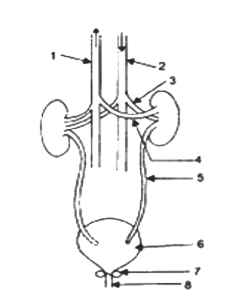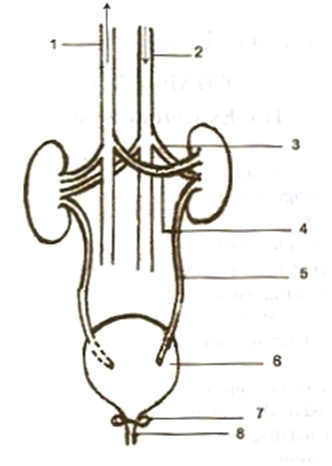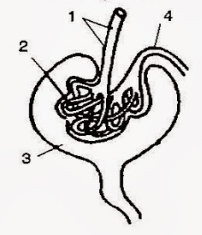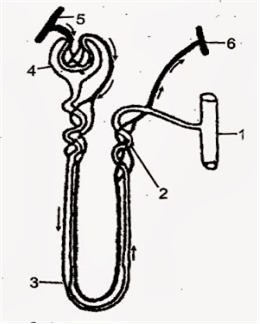The diagram given below shows the excretory system in humans. Study the same and answer the questions.
(i) Name the parts labelled 1, 2, 3 and 4.
(ii) Give the main function of the parts labelled 5, 6, 7 and 8.
(iii) Name the endocrine gland which could be added in the diagram and state its location/position.
i.
1 – Posterior vena cava
2 – Aorta
3 – Renal artery
4 – Renal vein
(ii)
5 (Ureters): Transport urine from the kidneys to the urinary bladder.
6 (Urinary bladder): Stores urine temporarirly
7 (Sphincter): Guards the opening of the urinary bladder into the urethra and relaxes only at the time of urination (micturition).
8 (Urethra): Helps to release the urine from the urinary bladder out of the body.
(iii)Adrenal glands. They are placed on the top of each kidney.








